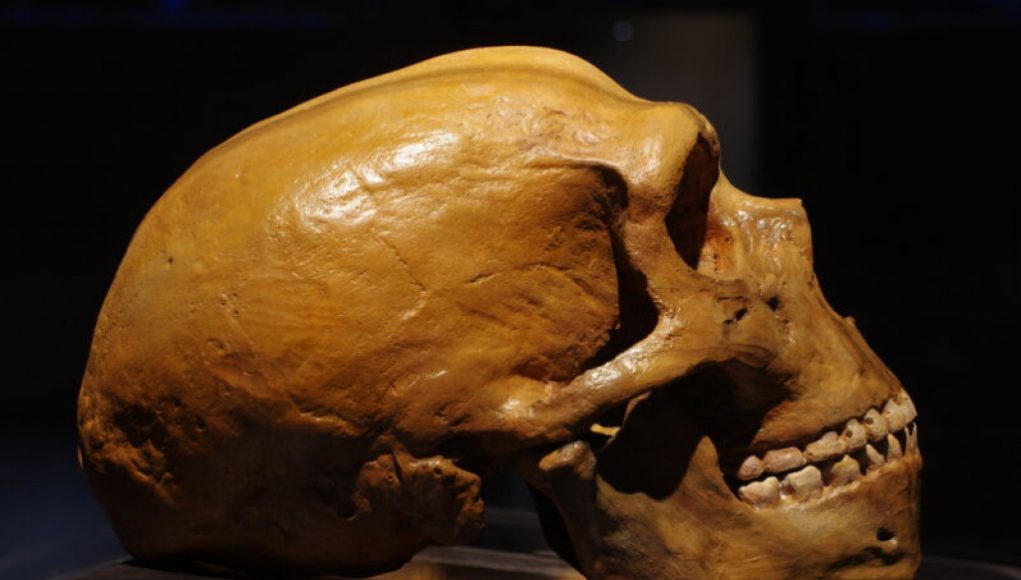Discovering that Neanderthals were able to manufacture synthetics long before modern humans is a fascinating revelation. It turns out that about 200,000 years ago, Homo neanderthalensis developed a method of generating a glue derived from birch tar that was incredibly strong and waterproof. This ancient superglue made bone and stone adhere to wood and didn’t decompose, and it was used a hundred thousand years before modern humans came up with anything synthetic.
But how did Neanderthals convert birch tar into glue? After studying ancient tools that carry residue from this glue, a team of researchers from the Eberhard Karls University of Tübingen and other institutions in Germany found evidence that this glue wasn’t just the original tar; it had been transformed in some way. This raises the question of what was involved in that transformation.
To see how Neanderthals could have converted birch tar into glue, the research team tried several different processing methods using only materials that Neanderthals would have been able to access. The simplest techniques involved burning birch bark on cobblestones so the tar could condense on the stones. The other methods involved a recipe where the bark was not actually burned but heated after being placed underground.
The resulting tars were all put through chemical and molecular analysis, as well as micro-CT scans, to determine which came closest to the residue on actual Neanderthal tools. Tars synthesized underground were closest to the residue on the original artifacts. The researchers believe that Neanderthals invented or developed this process based on previous simpler methods and that it constitutes one of the clearest indicators of cumulative cultural evolution in the European Middle Palaeolithic.
It’s possible that Homo sapiens might have shown Neanderthals how to make birch tar, but no evidence for this has been found, even though the species did overlap and interbreed. The researchers think it is most likely that Neanderthal capabilities were more advanced than many thought. Maybe “Neanderthal” should no longer be used as an insult.
For those seeking to understand the highly sophisticated and complex synthesis process used to create Neanderthal adhesives, a new study reveals groundbreaking insight into the process used by Homo neanderthalensis as far back as 200,000 years ago. While the adhesive technology used by Neanderthals is a distinct departure from that of modern man, detailed analysis suggests that the Neanderthal synthesis process developed meticulously over time.
Humans have been using adhesives to bond objects together for centuries, but Neanderthals had a much more complex and comprehensive method of creating their adhesives. In the past, it has been assumed that the Neanderthal adhesives were simply a liquid emulsion of natural substances, but this new study shows how the Neanderthals used an intensive process that involved crushing and grinding minerals and stones to a pulp-like consistency. This process was then used to create a sticky paste that could be used to hold objects together.
The research that was conducted to understand the synthesis process involved examining millennia-old tools using sophisticated micromorphological analysis. This included analyzing the various minerals contained in the samples, as well as the structure of the paste. The scientists found that the toxic heavy metals stibnite and cinnabar were ground down into a powder that was then mixed with various binder substances such as tree resins and gypsum. These binders helped to create a strong adhesive that was capable of holding heavy objects for extended periods of time.
This study is important because it helps us to better understand the quality and complexity of the technology used by the Neanderthals during this period. By analyzing the structure of the paste and the substances it contains, we can get a better idea of the level of skill and expertise used to create these tools. It is clear that the Neanderthals possessed a unique and advanced understanding of adhesion technology that was far ahead of its time.
Overall, this research has shed light on the impressive and sophisticated synthesis process used by Neanderthals to create adhesive tools. It is a vital insight into the technology of our closest evolutionary relative that may help to further our understanding of prehistoric man.




















